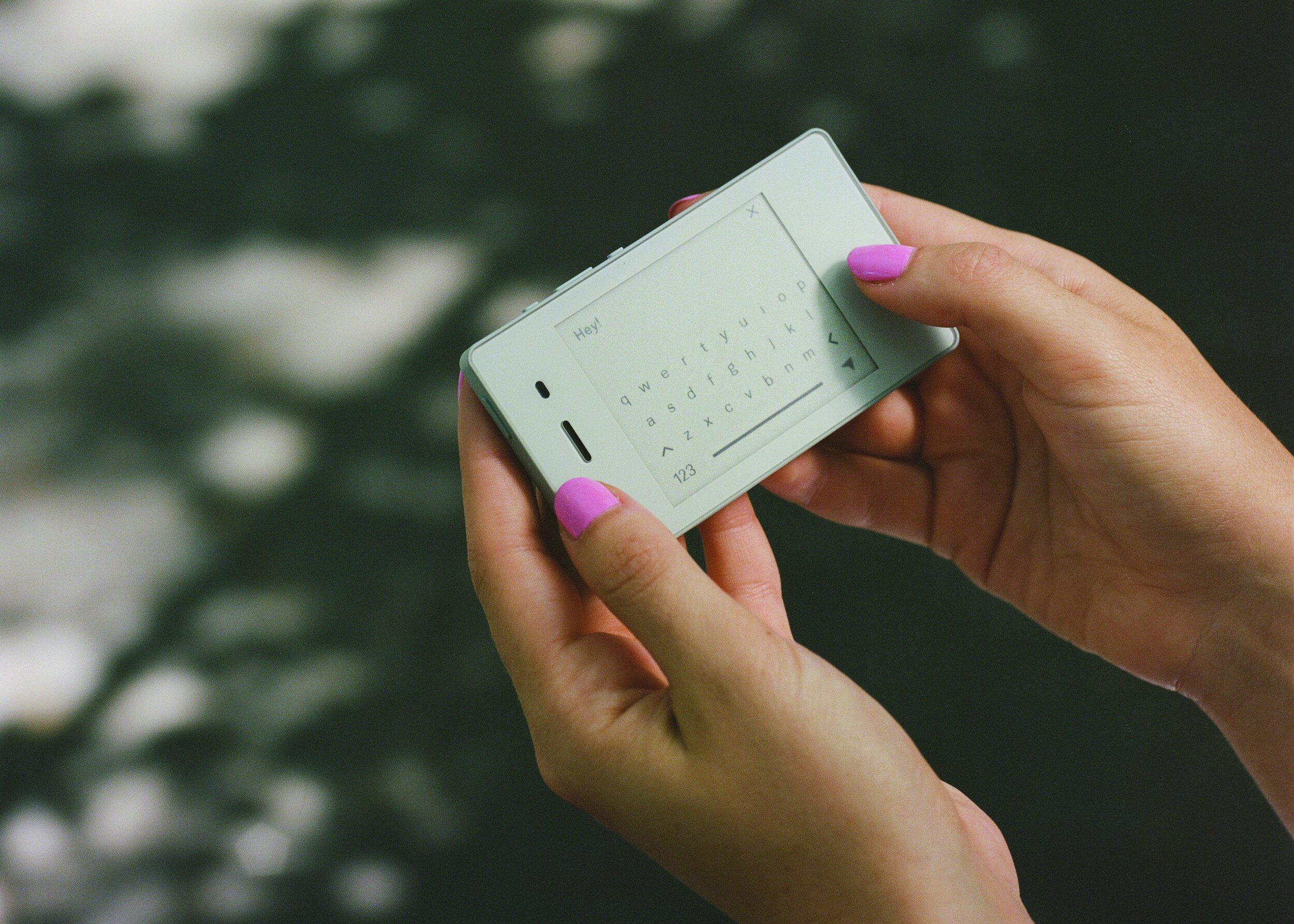Disconnect: Going Light
Our smartphones aren’t just a convenient mechanism that delivers all of our media joys; it functions as an apparatus for the advertising industry that is quietly embezzling our time, attention and data. But relief is coming. The Light Phone II, created by tech veterans Joe Hollier and Kaiwei Tang who met at Google, is a minimalist handset designed with two primary functions: to talk and text. We sat down with Tang to discuss our blue-screen addiction, the advantages of going “light,” and the urgency to reclaim our lives.
Interview by Nhi Mundy
Using the Light Phone II was quite a different experience. I struggled at first. There are no apps, no internet, and no social media. Are all these things that bad?
We’re not against technology; we’re against the business model behind the creation of apps and social media, one that is trying to maximize our time, attention, and data and then profiting from that data. We like tools—getting directions, listening to music, texting people; those are great. It’s similar to how we use a hammer or scissors. You use it when you need it, and then you put it back when you’re done. You don’t swipe your hammer for two hours, but that’s what we’re doing right now, and that doesn’t seem logical.
I’ll be honest. I’m not entirely sold. I understand the idea of simplifying that aspect of our lives, but it’s just proving so difficult in practice.
We know it’s not for everyone and what we are asking is foreign. But for us, this is an attempt to encourage people to take a break. There’s a common reaction when you go “light” for the first time without your smartphone; the anxiety hits you right away. You’re sitting there, and there’s nothing there for you to swipe — no social media, no camera. Our phone was designed to be used as little as possible because we don’t think that phones should overpower your life. With our phone, you have to slow down.
Your phone isn’t shiny, and it isn’t fast. You created it, knowing full well that the market was trained to be attracted to the complete opposite. Which, by the way, is a terrible business model.
If you think about it in terms of positioning, the product is the opposite, and the positioning is the opposite. Every company is trying to get more data and attention from you, so that’s the trend. We’re trying to offer something that helps you realize that there are other options. The Light Phone II may not be perfect at the moment, but at least it’s an option without all the distractions. It allows you to start thinking about technology and how it makes sense to you as an individual, rather than fighting with an attention-driven machine.
So having the consumer customize the phone rather than being customized as a consumer.
You can also argue that you can customize your smartphone and delete your apps, but the temptation is there. The eight-inch screens were designed for watching videos, designed so that animations look amazing and the colors are vivid. So that when you’re waiting for something to happen, your smartphone is there to show you a spinning wheel, and your eyes can never look away. It’s all by design. I get it when some customers say that they don’t need to go “light” because they have self-control. But, I’d argue that it’s not about self-control anymore. With the billions of dollars invested in big tech and all the talented engineers creating products to capture your time and attention, it has become increasingly impossible for self-control.
In a way, it reminds me of the Palm when it first came out. A lot of people bought it, but it never caught on because it was ahead of its time. Your phone is similar in that it is trying to establish a new behavior in people. But the idea of not being connected is alien for many. It seems like you have a lot of work in terms of educating your customer.
I agree, and it’s not just us. If you saw the documentary on Netflix, “The Social Dilemma,” all the influencers are switching off their social media. It’s a movement now. And with more technologies like 5G and newer products being introduced, it’s going to get worse. I feel like more people are becoming aware of what’s happening — the negative impact that it’s having on our mental health. What are you going to do if you don’t want to use a smartphone? You could buy a flip phone or a Nokia that was designed 15 years ago, but those are bulky with 2G, so the connection is spotty. And most of them still have browsers and apps. We’re hoping to fill that gap for people who want to break away from the distraction.
What’s the end goal? I know it’s a niche product meant to solve a social problem. Was money ever part of the equation?
Of course. My co-founder and I are really passionate about the mission, and we think the Light Phone II deserves a place. But we have to make money, and we do have quite a lot of investors that are supporting us, including the co-founder of Lyft and Twitter, John Zimmer, and Tim Kendall from Pinterest, who was also featured in “The Social Dilemma.” He is actually also a board member. So we have quite a lot of support for our mission. In terms of the business opportunity, every smartphone owner can potentially have a Light as their secondary phone. Imagine 1% or 1.5% of smartphone users who resonate with what we are trying to do — that’s roughly 20 million people. I’m sure more than 0.5% of us are sick of smartphones and the business model behind it. From the research that we’ve seen, 24 to 30-year-olds take digital detox most seriously, and that’s reflecting on our customer base. It’s the younger generation, and that was encouraging to me. They’re born into social media, but they are more aware of what’s happening and are looking for different options.
What you’ve done is kind of like an f-you to the tech industry. But as a designer, how do you see this playing out? Technology is moving so quickly, yet you’re telling us to push pause.
Design, to me, is the lifestyle. Design is a way to figure out the why. Meaning you have to understand why you are creating certain things for certain people. What’s the point? What’s the problem you’re trying to face? Why the shape? Every single detail has an intention. I used to work for Motorola and built phones for them. There was never a why. We would be creating a phone every other month, each time, slightly better, slightly bigger. Nobody ever understood why. So what we’re trying to do here is almost like a reaction to that trend. We feel like there is a crisis in humanity: the way we use our technology, the way we avoid face-to-face conversations, the way we escape to our smartphones so easily. If you ride the subway in New York and watch people using their smartphone, you can see people pulling out their smartphones, swiping it for five seconds, and putting it back, then realizing that nothing is happening. And in five seconds, they’re pulling it out again. And they keep repeating that over and over again. I don’t think this is the kind of future we want.
Right. So, there seems to be this kind of movement, this emphasis on simplifying our lives, a push back on consumerism. We’ve seen people moving outside of the city to places like upstate New York. They’re moving because they can work remotely and stay connected. How can your phone work for the people who live in these isolated areas, who need to be connected?
It’s fascinating seeing what has happened since the lockdown. We’ve seen more people become aware of their relationship with technology when they’re home 24/7. They realized, ‘Wow, I’ve spent all my time on my laptop or my smartphone.’ But even in lockdown, you can potentially create a space that doesn’t have all the temptations — a space or time that’s carved out just for you, to read books, or whatever — that’s your time. You’re not giving away your time or attention, or data to companies. Many people are starting to realize how abusive this relationship is with their smartphones. It’s a relationship that we’re all in right now.



